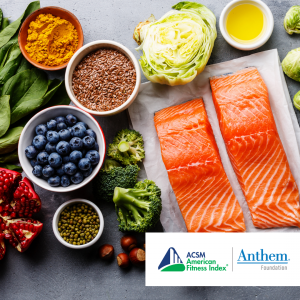
Over the last century, the human lifespan has undergone dramatic changes. At the start of the 20th century, the average lifespan at birth for women and men in the United States was 50 years. In 2021, the average life expectancy is around 77 years (1). This increasing lifespan trend is expected to continue rising to an average of 85 years by 2125. It is important to note that this change is primarily driven by a reduction in early morbidity rates rather than an extension of maximum lifespan. Due to this, many more individuals live longer lives during a period where they can be classified as “older adults.” Presently, 13% of the United States population is comprised of individuals over 65 years of age, compared to 4% in 1900 (2). Therefore, it is important to discuss research related to the effects of aging on physiology and metabolism to promote public health policies and practices that benefit older individuals.
Good nutrition is essential regardless of an individual’s age because it may help prevent diseases such as osteoporosis, high blood pressure, heart diseases, type 2 diabetes and certain cancers. However, good nutrition may be even more important in older individuals due to changes in energy intake and energy expenditure with age. The impairments in energy balance can be mediated by several factors such as reduced hunger and increased satiety (3), changes in blood sugar concentrations (4), impairments in hormone production (5), changes in taste and smell (6), reduced dietary variety (7) and medical and social factors (8). Furthermore, with increasing age, researchers have also observed a decline in the amount of energy used while the body is at rest(9) and the amount of energy used for digestion, absorption and storage of consumed foods(10). Taken together, these changes in metabolism that occur as we age call for effective nutritional strategies that help older individuals stay healthy with aging.
Nutritional strategies that help older individuals stay healthy with aging
- Incorporate food groups that provide nutrients without extra calories, such as fruits and vegetables (of different types and colors), whole grains (like oatmeal, whole-grain bread and brown rice), fat-free or low-fat dairy products fortified with vitamin D and calcium (like milk, yogurt, nut milks), lean protein sources (e.g., seafood, lean meats, poultry and eggs) and healthy fats (e.g., walnuts, almonds, avocados) will translate to a healthier lifespan.
- Minimize high-calorie, low nutrient-dense foods (e.g., foods with excess calories but few nutrients, such as chips, desserts, baked goods, soda and alcohol).
- Reduce saturated and trans fats (e.g., animal products, margarine, fried and processed foods).
- Drink enough liquids to ensure proper hydration and prevent dehydration. Aging and certain medications may impact sensations of thirst. Older adults should consume two to three liters of liquids per day in the form of water (ideally), herbal teas, broths or liquid-based foods like smoothies and soups.
- Maintain physical activity according to the ACSM guidelines to promote beneficial effects on healthy aging by reducing the risk of falling, fractures, coronary heart disease, developing high blood pressure, certain cancers and diabetes(11).
Authors: Rohit Ramadoss, M.S.; Stella L. Volpe, Ph.D., RDN, FACSM, ACSM-CEP, Virginia Polytechnic Institute and State University
References
- NVSS – Life Expectancy. (2021, March 10).
- 2017 Profile of Older Americans | advancingstates.org.
- Evidence for the anorexia of aging: Gastrointestinal transit and hunger in healthy elderly vs. Young adults | American Journal of Physiology-Regulatory, Integrative and Comparative Physiology.
- Campfield, L. A., Smith, F. J., Rosenbaum, M., & Hirsch, J. (1996). Human eating: Evidence for a physiological basis using a modified paradigm. Neuroscience & Biobehavioral Reviews, 20(1), 133–137.
- Roth, G. S. (1979). Hormone action during aging: Alterations and mechanisms. Mechanisms of Ageing and Development, 9(5), 497–514.
- Doty, R. L., Shaman, P., Applebaum, S. L., Giberson, R., Siksorski, L., & Rosenberg, L. (1984). Smell identification ability: Changes with age. Science, 226(4681), 1441–1443.
- Mt, F., & Kj, S. (1985). Characterizing consumption patterns by food frequency methods: Core foods and variety of foods in diets of older Americans. Journal of the American Dietetic Association, 85(12), 1570–1576.
- De Castro, J. M., & de Castro, E. S. (1989). Spontaneous meal patterns of humans: Influence of the presence of other people. The American Journal of Clinical Nutrition, 50(2), 237–247.
- Fukagawa, N. K., Bandini, L. G., & Young, J. B. (1990). Effect of age on body composition and resting metabolic rate. American Journal of Physiology-Endocrinology and Metabolism, 259(2), E233–E238.
- Thermic Effect of Feeding in Relation to Energy Balance in Elderly Men—Abstract—Annals of Nutrition and Metabolism 1983, Vol. 27, No. 1—Karger Publishers.
- Scientific Report | health.gov.


